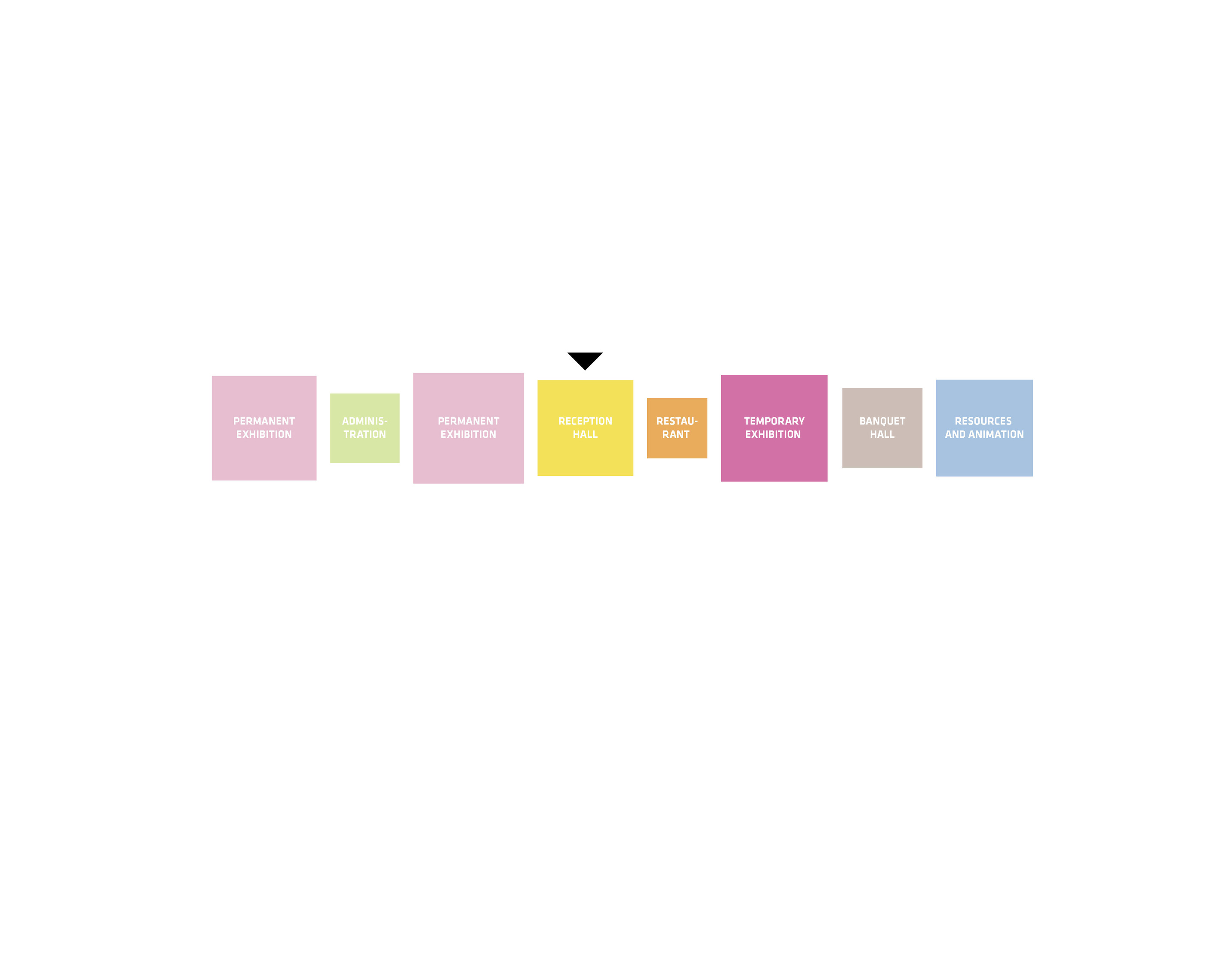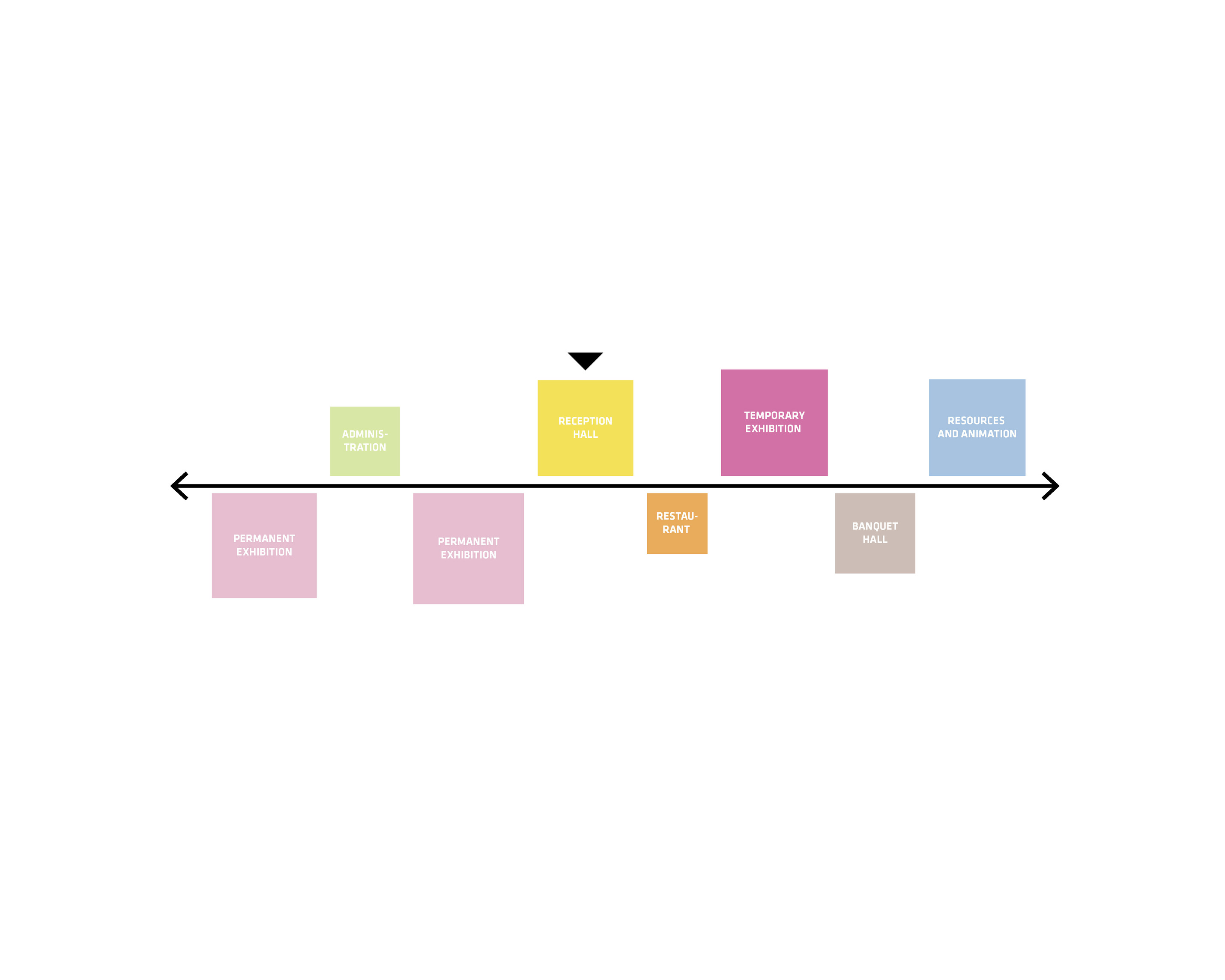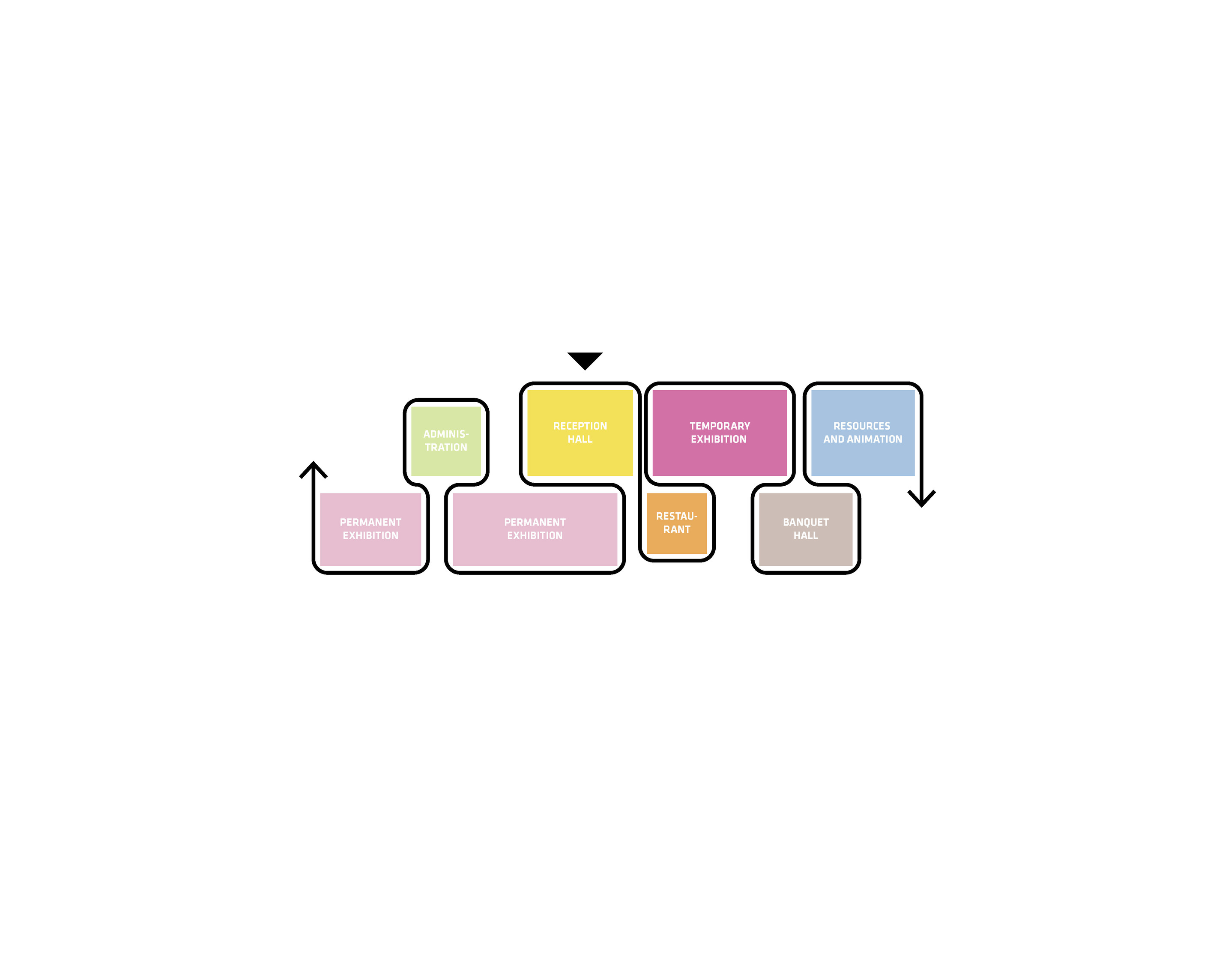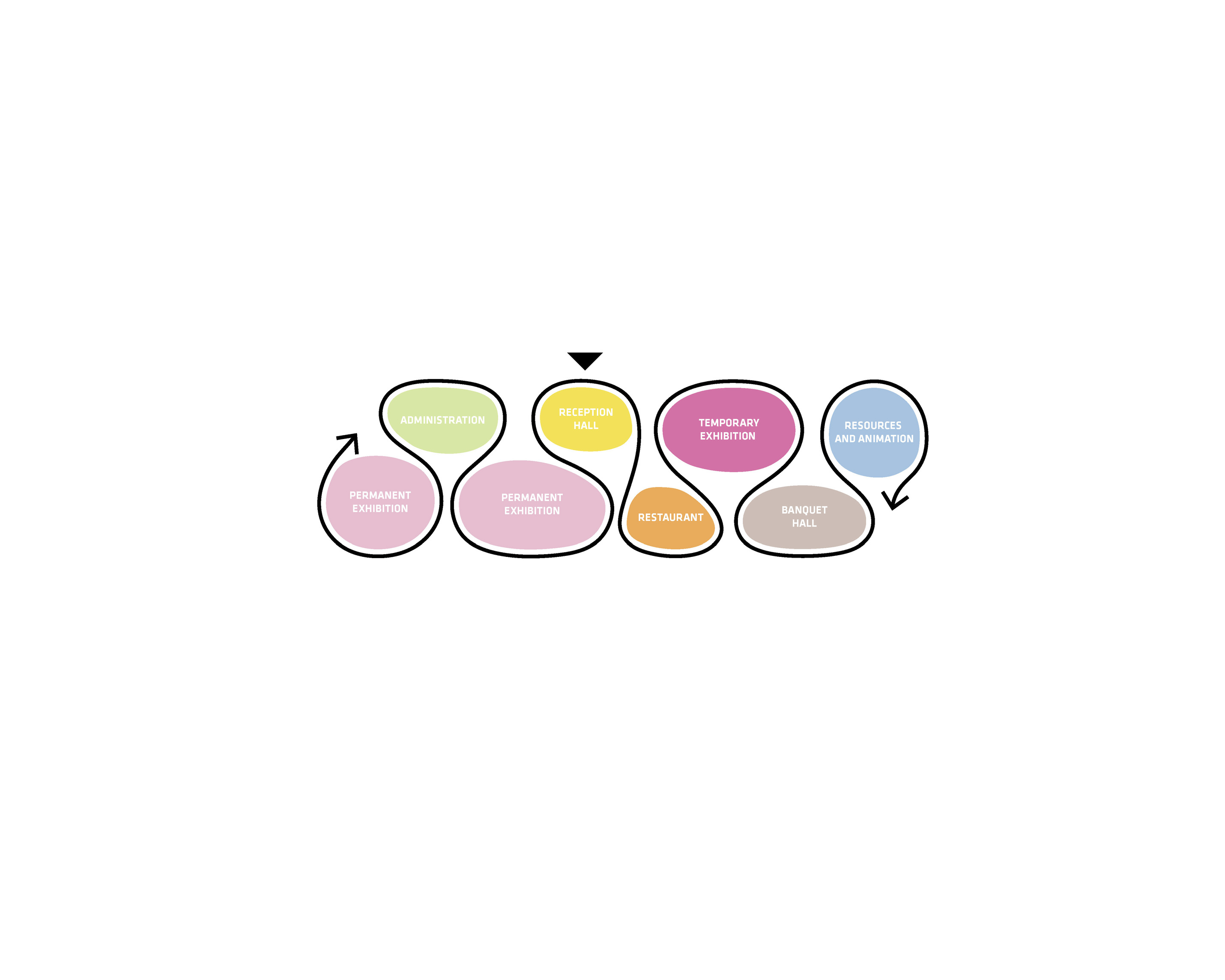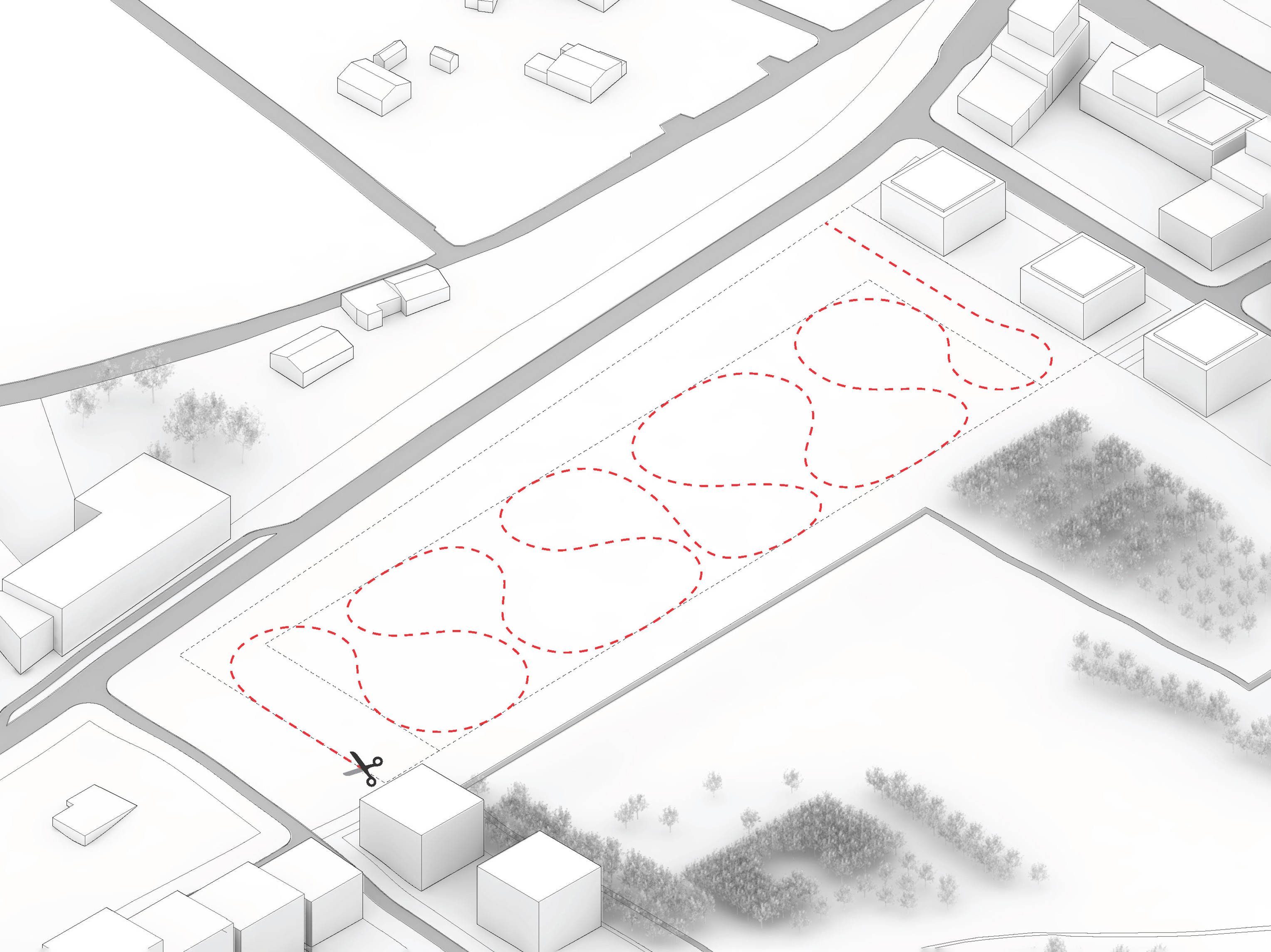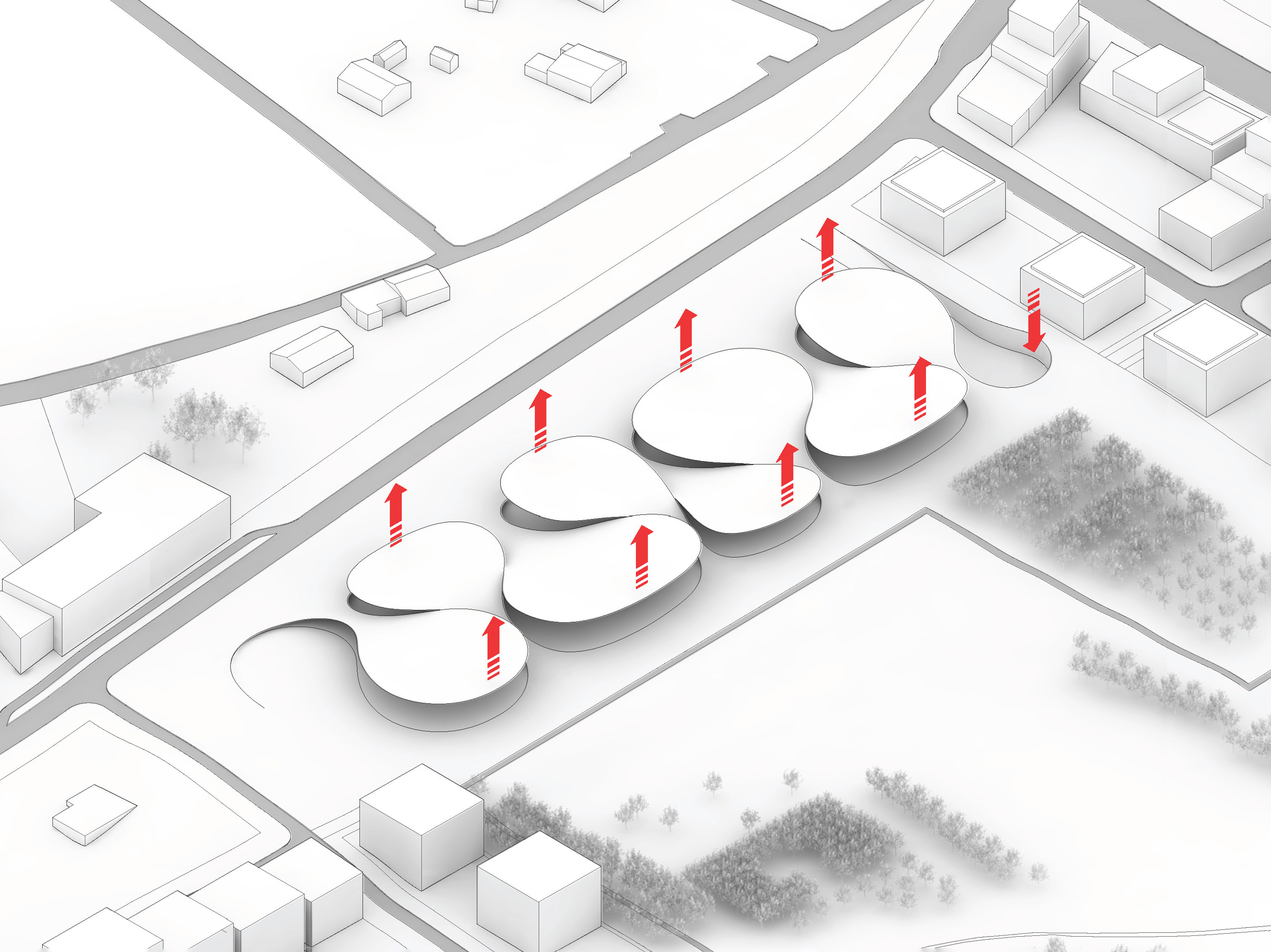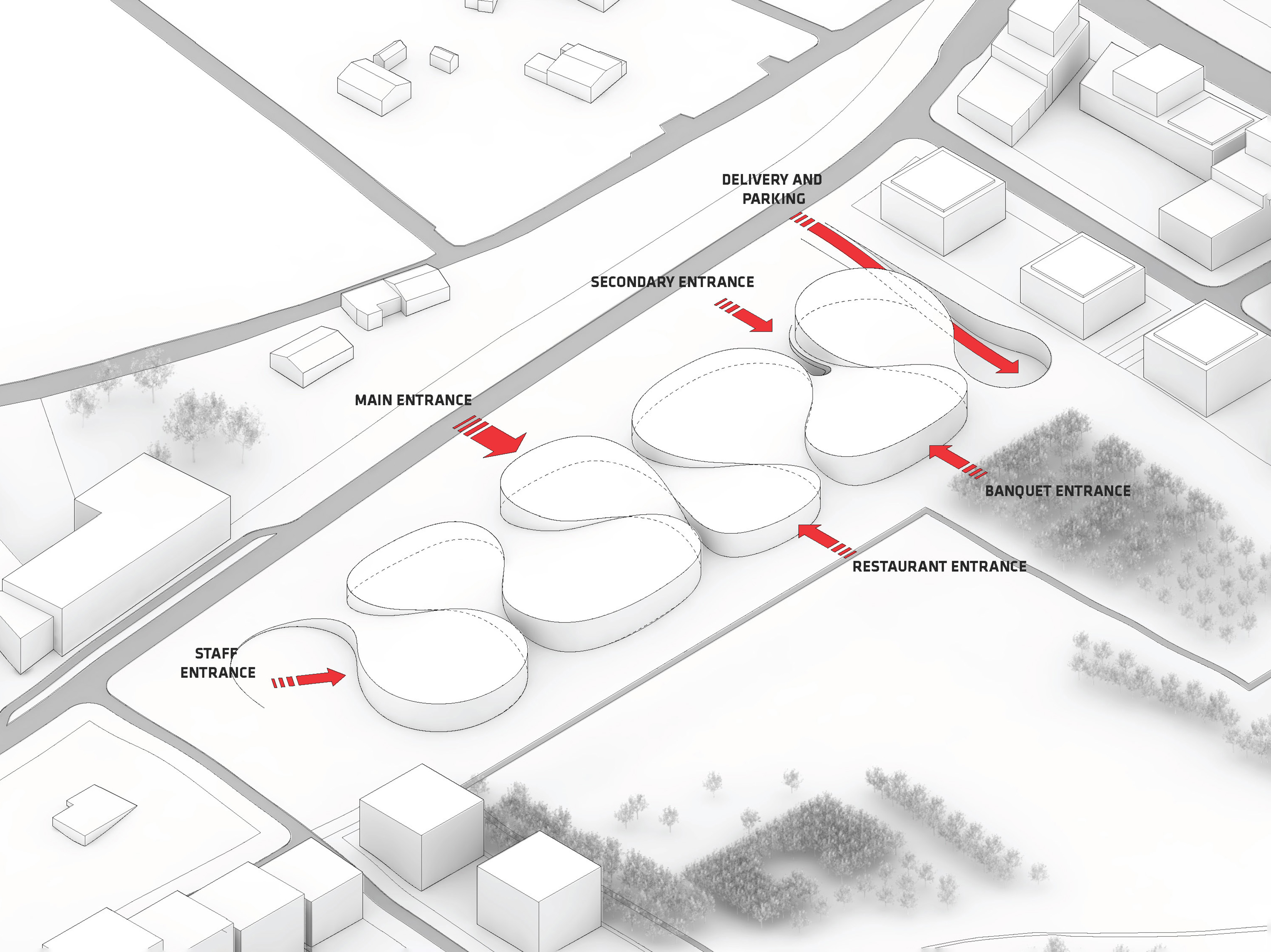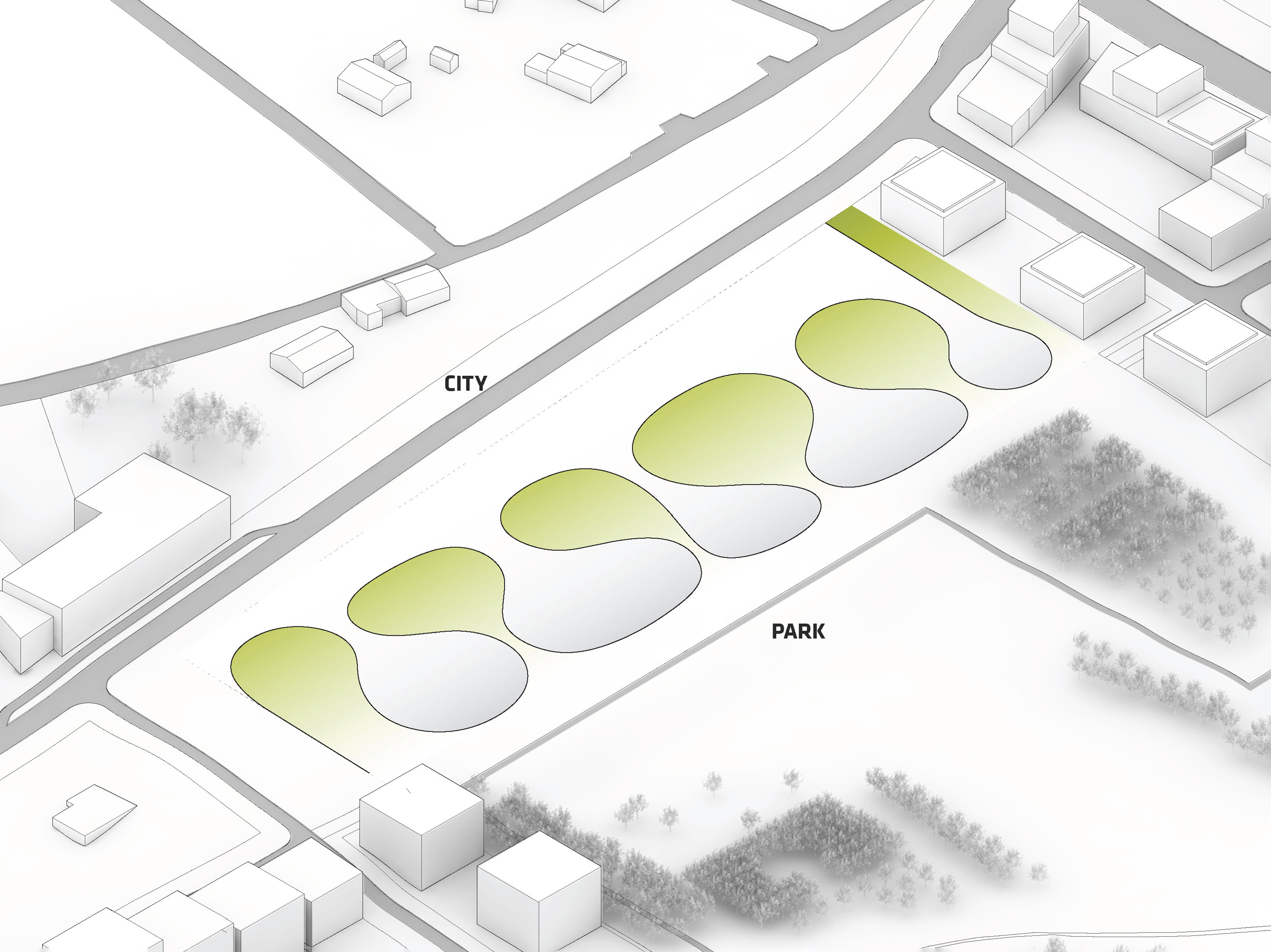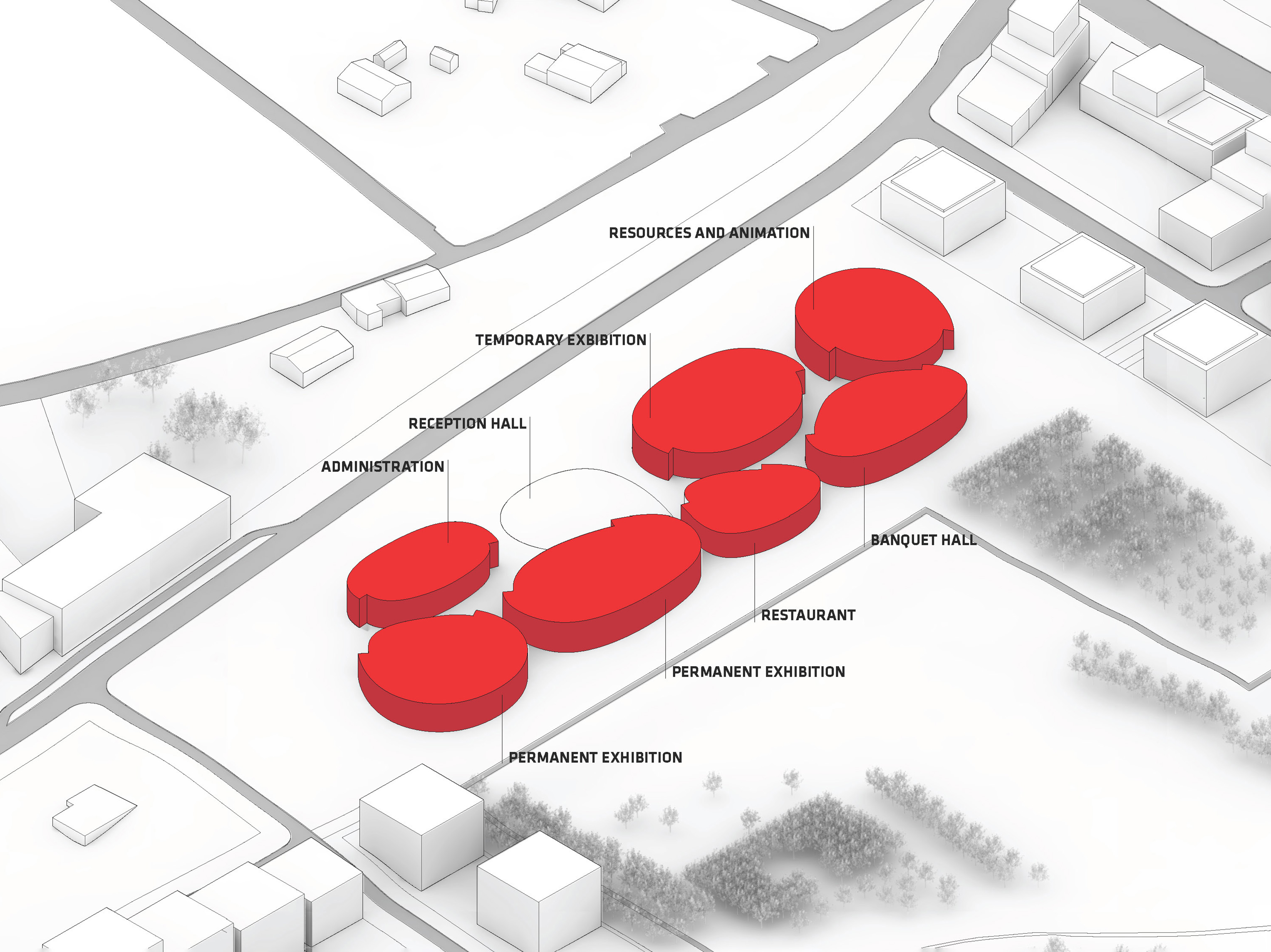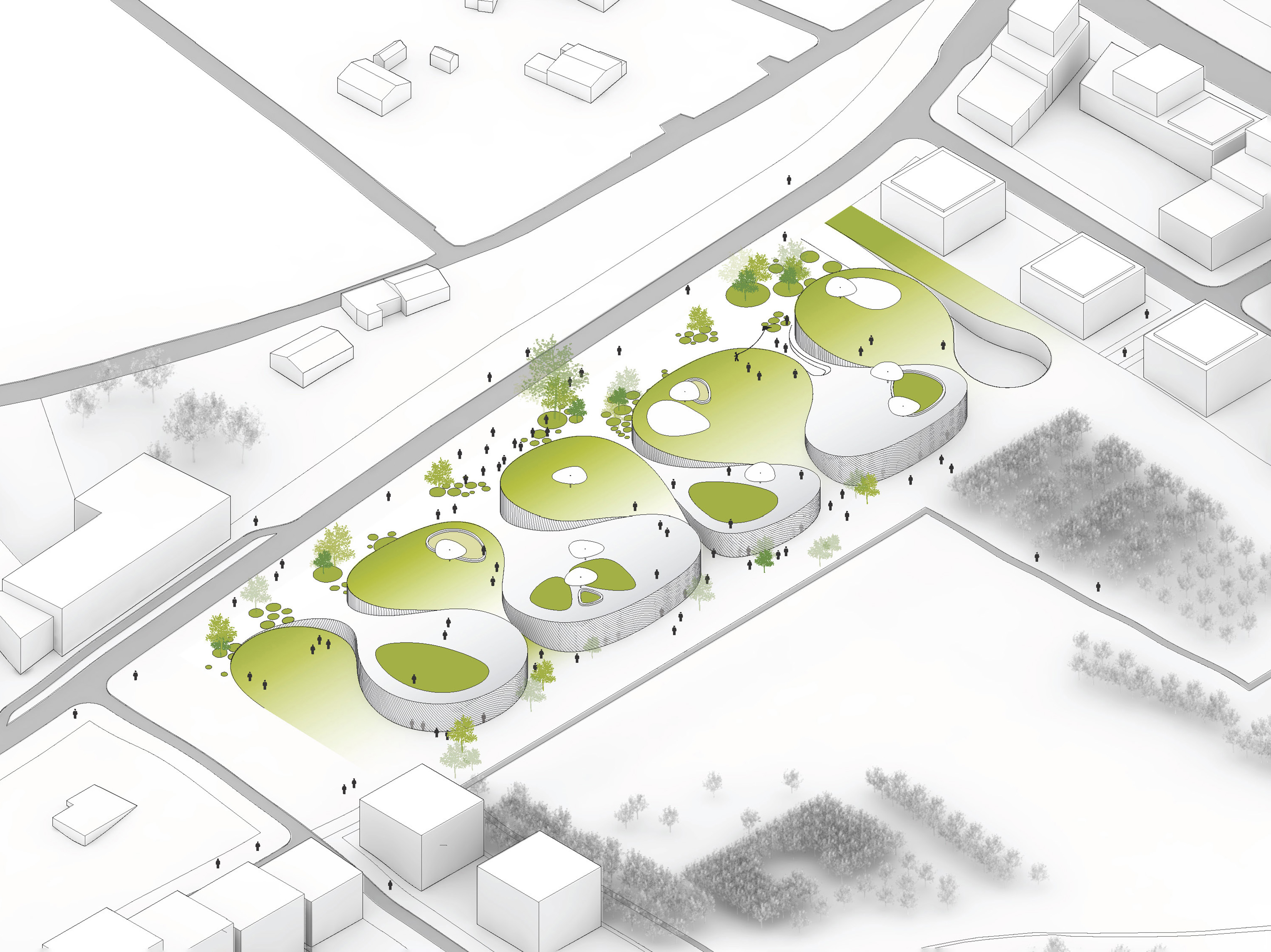STATUS
IDEA
MONTPELLIER, FRANCE
CLIENT
Ville de Montpelier
TYPOLOGY
Culture
SIZE M2/FT2
7,800 / 83,959
STATUS
IDEA
SHARE
The Museum of the Human Body in Montpellier is rooted in the humanist and medical tradition of Montpellier and its world-renowned medical school, which dates back to the tenth century. It explores the human body from in an artistic, scientific and societal approach through cultural activities, interactive exhibitions, performances and workshops.
The museum is conceived as a confluence of the park and the city – nature and architecture – bookending the Charpak Park along with the city hall. Like the mixture of two incompatible substances – oil and vinegar – the urban pavement and the parks turf flow together in a mutual embrace forming pockets of terraces overlooking the park and elevating islands of nature above the city.
Like a seismic fault line, the architectural crusts of planet earth are lifted and mingled to form an underlying continuous space of caves and niches, lookouts and overhangs. Rather than a single perimeter delineating an interior and an exterior, the façade is conceived as a sinuous membrane meandering across the site, delineating interior spaces and exterior gardens in a seamless continuum oscillating between the city and the park.
A series of seemingly singular pavilions that weave together to form a unified institution – like individual fingers united together in a mutual grip.
The roofscape of the Museum of the Human Body is conceived as an ergonomic garden – a dynamic landscape of vegetal and mineral surfaces that allow the parks visitors to explore and express their bodies in various ways – from contemplation to the performance – from relaxing to exercising – from the soothing to the challenging.
The façades of the Museum of the Human Body are transparent, maximizing the visual and physical connection to the surroundings.
On the sinuous façade that oscillates between facing North and South, East and West, the optimum louver orientation varies constantly, protecting sunlight, while also resembling the patterns of a human fingerprint – both unique and universal in nature.
Bjarke Ingels Jakob Lange Andreas Klok Pedersen Jakob Sand Sasha Lukianova Birk Daugaard Chris Falla Dimitrie Grigorescu Gabrielle Nadeau Lorenzo Boddi Marie Lançon Tore Banke Aleksander Wadas Alexander Eising Chloe Blain Chris Beaudin Danai Charatsi Katerina Joannides Oscar Abrahamsson
A+ Architecture
EGIS Bâtiments Méditerranée
Base
L'Echo
Celsius Environment
Cabinet Conseil Vincent Hedont
BIG Ideas
